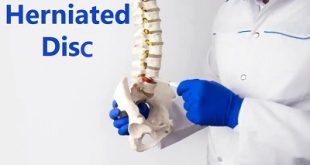Definition
Hammer toe is a painful foot deformity where the toe is bent at the middle joint. This condition resembles the head of a hammer, hence its nickname. The toe’s abnormal bending is the result of an imbalance in the muscles, ligaments, and tendons that usually keep the toe straight. Usually, muscles work in pairs to straighten and bend the toes. But if the toe is bent and held in one position long enough, the muscles tighten and cannot stretch out. There is no single cause of hammer toe. Although some people are born with hammer toes, it typically develops as a result of trauma from ill-fitting shoes, or arthritis.
Epidemiology
Deformities of the lesser digits are one of the most common problems to affect the foot and ankle, with up to 20% of reported incidences. Lesser toe problems increase with advancing age, occurring more frequently in women and have high heritability. The condition also has a strong correlation to the presence of a hallux abductovalgus deformity, increased length of the involved toe, as well as pes planus foot posture.
Types of Hammer Toe
There are two types:
Flexible hammertoes: These hammer toes are less serious because they can be diagnosed and treated while still in the developmental stage. They are called flexible hammer toes because they are still moveable at the joint.
Rigid Hammer Toes: This variety is more developed and more serious than the flexible condition. Rigid hammer toes can be seen in patients with severe arthritis, for example, or in patients who wait too long to seek professional treatment. The tendons in a rigid hammer toe have become tight, and the joint misaligned and immobile, making surgery the usual course of treatment.
Hammer Toe Risk Factors
The most common risk factor for hammer toe is frequently wear high heels or shoes with narrow toe boxes. Age is also a risk factor.
Other risk factors for hammer toe include:
- Abnormally high or low arch: This foot structure can put pressure on the toes as you stand and walk. Abnormally long toes may also cause hammer toes. Hammer toe may run in families because foot structure is hereditary.
- Bunions: If you develop a bunion, it could push the neighboring toe out of place.
- Arthritis and other medical conditions, such as neuropathy can affect the joint leading to hammer toe
Causes of Hammer Toe
Muscular or tendon imbalance: The most common cause of a hammer toe is a muscle/tendon imbalance. The muscle/tendon imbalance is due to improper foot structure or function caused by flat or high arched feet or some neurological condition. Over time the muscle/tendon imbalance leads to a bending of the toe.
Ill-fitting footwear: Hammer toes may also be aggravated by or caused by shoes that don’t fit properly. If a toe is long and forced into a cramped position, a hammertoe may result.
Genetics: In some people, hammer toes are inherited.
Trauma: Sometimes, a hammer toe may result from an injury to the affected toe.
Symptoms
A few symptoms of hammer toe have been mentioned below. They are:
- A hammer toe has a downward bent
- Stiff and has a claw-like appearance
- Callus formation on the sole of foot
- Corn formation on top of the bent toe
- Pain in the bone that joins the big toe with the foot and pain while moving the toe
- Inflammation
- Irritation
- Redness in the affected toe
- Formation of open sores
Hammer Toe Complications
- If not treated in time, the person may start walking with a limp to relieve discomfort. This shifts the body-weight in unusual ways causing other orthopaedic problems
- The deformed toe starts scraping against the footwear at the top, causing corns, calluses, bunions, redness or swelling
- The above sores can develop infection and pus formation
- If you suffer from diabetes or peripheral arterial disease, the infected sores can lead to conditions such as cellulitis or osteomyelitis
- Due to the unsightly appearance of the feet, the person may avoid social gatherings
- When social gatherings cannot be avoided, the person tends to push the feet behind and out-of-sight while sitting. This puts a lot of strain on the knees.
Diagnosis and test
Your doctor will ask questions about your symptoms and past health and do a physical exam. Your doctor will want to know:
- When the problems started, what activities or shoes make them worse, and if other parts of the foot are painful.
- What kind of shoes you wear and how much time you spend standing or walking every day.
- Any previous foot problems you have had.
- Any medical conditions you have that could be related, such as arthritis, diabetes, or poor circulation.
During the physical exam, your doctor will look at your foot to see if the toe joint is fixed or flexible. A joint that has some movement can sometimes be straightened without surgery. A fixed joint often requires surgery.
If you are thinking about having surgery to correct your problem, you may need:
- An X-ray to help the doctor decide what type of surgery would be most helpful.
- Blood flow testing, which may include Doppler ultrasound, if your foot seems to have poor blood flow.
- Nerve testing if your doctor thinks you have nerve problems in your foot. If this is the case, you may need to see a neurologist, a doctor who specializes in brain, spine, and nerve problems.
Treatment and medications
Nonsurgical Treatment
In the early stages of hammer toe when the joint is still flexible treatment typically consists of simple measures.
Padding corns and calluses: Your foot and ankle surgeon can provide or prescribe pads designed to shield corns from irritation. If you want to try over-the-counter pads, avoid the medicated types. Medicated pads are generally not recommended because they may contain a small amount of acid that can be harmful. Consult your surgeon about this option.
Changes in footwear: Your doctor will recommend that you avoid wearing tight, narrow, high-heeled shoes. Shoes should be one-half inch longer than your longest toe which, for many people is the second toe and have a soft, roomy toe box.
You may also be able to find a shoe with a deep toe box that accommodates the hammer toe. A shoe repair shop may be able to stretch a toe box so that it bulges out around the toe. Wearing sandals may help, if they do not pinch or rub other areas of the foot.
Splinting/strapping: Splints or small straps may be applied by the surgeon to realign the bent toe
Hammer toe splints
Exercises: Specific exercises can help stretch and strengthen the muscles in your foot. Your doctor may recommend gently stretching your toes manually or using your toes to pick things up off the floor. He or she may also recommend doing “towel curls” to strengthen the toes. To perform a towel curl, place a towel flat under your foot and use your toes to crumple it.
Over-the-counter remedies: Using commercially available straps, cushions or nonmedicated corn pads can help relieve pain. If you have diabetes, poor circulation, or a lack of feeling in your feet, talk to your doctor before attempting any self-treatment.
Surgical Treatment
If the toe joint is rigid and no longer moveable, or if nonsurgical treatment does not relieve your symptoms, your doctor may recommend surgery. Surgery is typically performed on an outpatient basis using a local anesthetic. The actual procedure will depend on the type and extent of the deformity.
Tendon lengthening: For patients with a flexible toe joint, the condition can often be treated by lengthening the tendons that are causing the joint imbalance.
Tendon transfer: Some patients with a flexible toe joint may benefit from treatment that involves transferring tendons from the bottom of the toe to the top of the toe to help pull the joint into a straight position.
Arthrodesis (joint fusion): Patients who have a rigid toe joint may undergo tendon lengthening in combination with arthrodesis. In this procedure, your doctor will remove a small part of a bone in the toe joint to ensure that the toe can extend fully. He or she will then insert an external wire or pin and/or internal plate to hold the bones in place while the bones fuse together.
Prevention of Hammer Toe
Most cases of hammertoe can be prevented by wearing shoes that fit properly and give the toes plenty of room. Some recommended guidelines include:
- Avoid shoes with pointed or narrow toes.
- Avoid shoes that are too tight or short.
- Avoid high-heeled shoes, which can force the toes forward.
- If the shoes hurt, don’t wear them.
- Choose shoes with wide or boxy toes.
- Choose shoes that are a half-inch longer than your longest toe.
 Diseases Treatments Dictionary This is complete solution to read all diseases treatments Which covers Prevention, Causes, Symptoms, Medical Terms, Drugs, Prescription, Natural Remedies with cures and Treatments. Most of the common diseases were listed in names, split with categories.
Diseases Treatments Dictionary This is complete solution to read all diseases treatments Which covers Prevention, Causes, Symptoms, Medical Terms, Drugs, Prescription, Natural Remedies with cures and Treatments. Most of the common diseases were listed in names, split with categories.








I am suffering from painful toes and need urgent treatment send
If you’re experiencing painful toes, consider rest, elevation, and ice packs for temporary relief. Over-the-counter pain medications may help alleviate discomfort. Ensure you wear comfortable shoes to minimize pressure on the toes. However, for severe pain, swelling, or signs of infection, seek urgent medical attention for a proper diagnosis and appropriate treatment.